December 21, 2024 | Getting Prepared, Intellectual Preparedness, Temporal Preparedness | No Comments
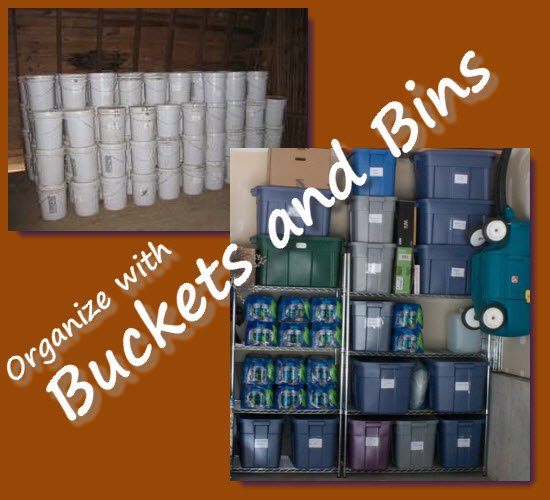
There are so many lists of things to gather and have on hand in case of an economic crisis, natural disaster, emergency, famine, terrorist attack and any number of things. One effective way to organize and store these various “Prep” items is using buckets and bins.
BUCKETS

A 5 gallon round bucket is a common, very useful and sturdy container that can be sealed tight with a gasket lid. Buckets come in other sizes and they have different grades, food grade typically being stamped with a number 1, 2, 4, or 5.

For long term food storage, the best kind of plastic bucket to utilize is a high density polyethylene (HDPE) which is one of the most stable and inert types of plastic and is a food grade #2. PETE, PP (Polypropylene) and LDPE are other kinds of plastics that are also okay for food storage and use the food grade #’s of 1, 4 and 5 typically. If you run in to a plastic bucket with a # 7, it is a bio plastic which are synthesized from a plant-based source like corn. However, not all #7 buckets are bio-plastics. So you may want to stick with buckets labeled with a 1, 2, 4 or 5 for storing food.
** TIP – Be sure and store a bucket lid opener with your buckets to make opening them much easier.

You can also purchase a gamma lid for your 5 gallon bucket, making it easy to open and use the contents. Not all your buckets need a gamma lid, just the one or two that you are accessing the contents of most frequently. The other buckets you can leave sealed until you need them; and then put the gamma lid on the next one you open.
BINS

Bins are plastic containers that have lids and come in various sizes and are usually stack-able. There are different brands and durability of bins. Some plastic bin material weather better in different temperatures and have better fitting lids, although the more durable bins are usually more expensive as well.
I have found that the clear plastic bins I’ve used seem to end up breaking and cracking first. We’ve gotten blue bins and brown bins from Wal-Mart that we’ve had for several years and have fared okay. The lids snap on each end, but do expand with pressure from the contents in the middle of the lid, sometimes making the sides of the bin open which allows bugs or whatever to crawl inside.

Recently, we’ve purchased bins like this, that seem to be much more thick and durable than previous ones we’ve been using these last several years. These new ones feel like a thicker plastic that won’t gape on the sides or lid very easily under pressure.
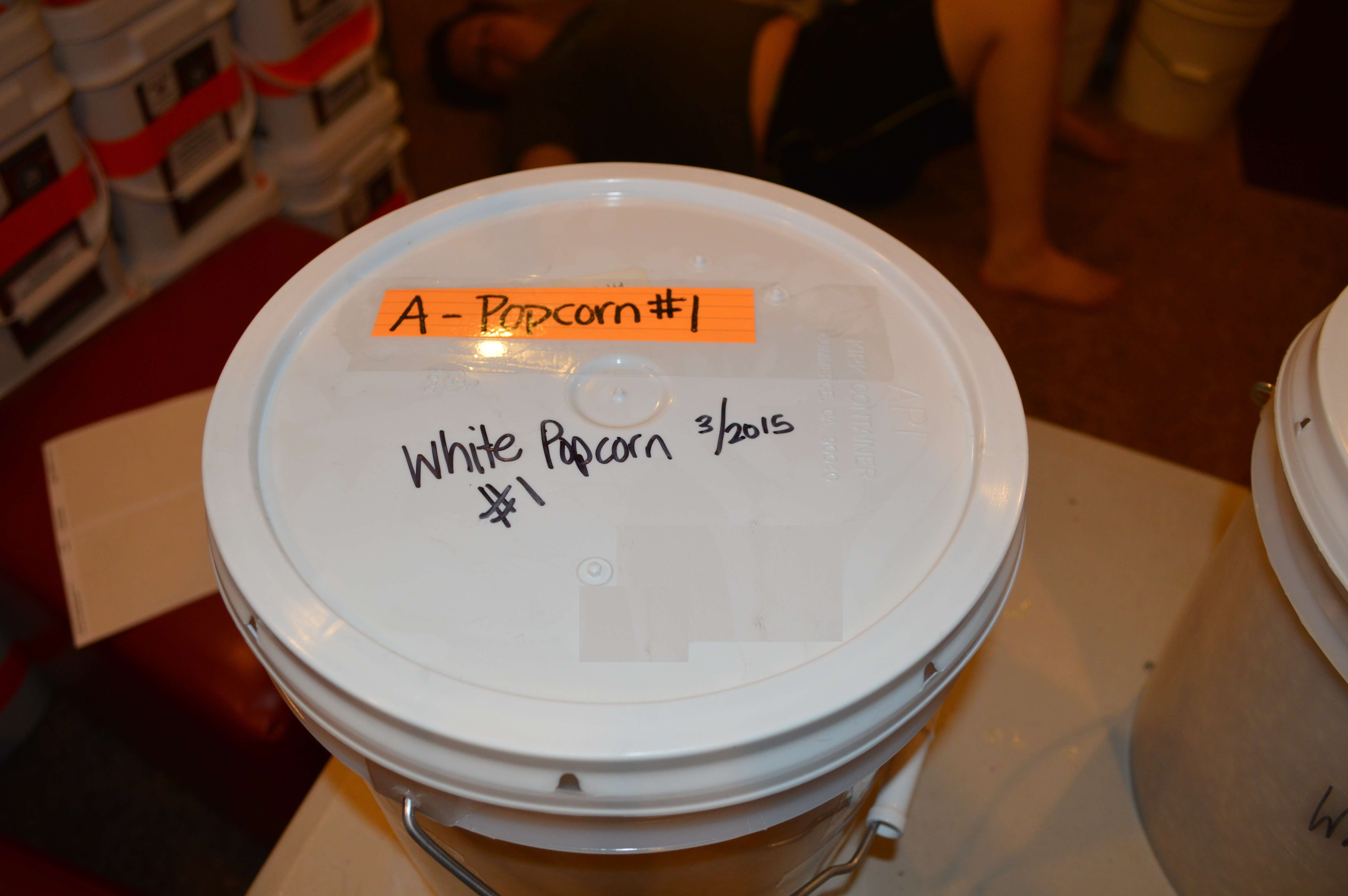
** TIP – Always label what is inside your buckets and bins. Have labels clear and easy to read.
4 Gallon SQUARE Buckets & using COLOR CODING to keep organized
Another way to store your preps are these 4 gallon square buckets with gasket lids (you can get non gasket lids, and even gasket lids with hinges) from the Industrial Container and Supply Company in Utah. This is a great way to store food or non-food preps.
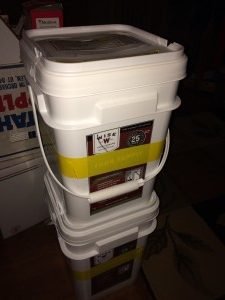
I’ve decided to used colored duct tape to help identify what’s inside (blue for hygiene, yellow for fire, etc.). The reason I don’t use red for a category is that I use red duct tape to mark any box or bucket that is fragile or contains glass items (I pack them securely but label “fragile” as well). So RED is more universal to mean “handle with care”.

I also include a printed list of what’s inside taped to the lid. I’ve put most things inside in ziplock bags or vacuum sealed bags. It’s nice to know what’s inside without having to open the bucket.
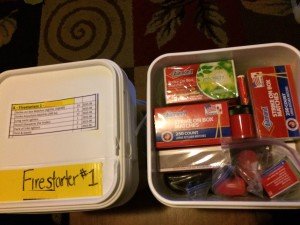
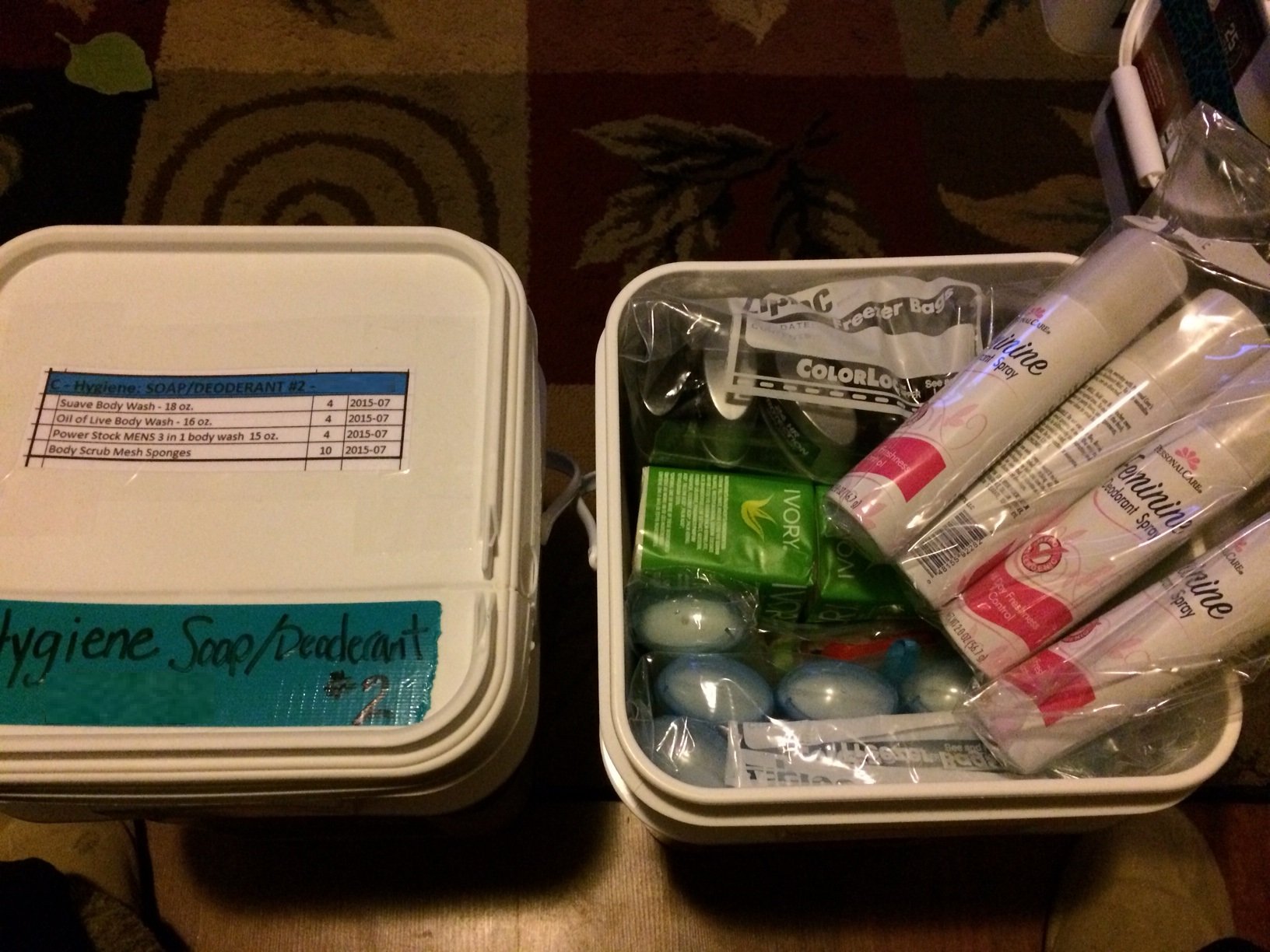
I do this to store a lot of my non-food items as well. These are for items beyond the 72-hour-kit time frame. In preparing “every needful thing” and the “necessities of life” as counseled by several prophets. In the event that stores cannot be reached or are closed, power outage, call to gather or bug out, and so forth.

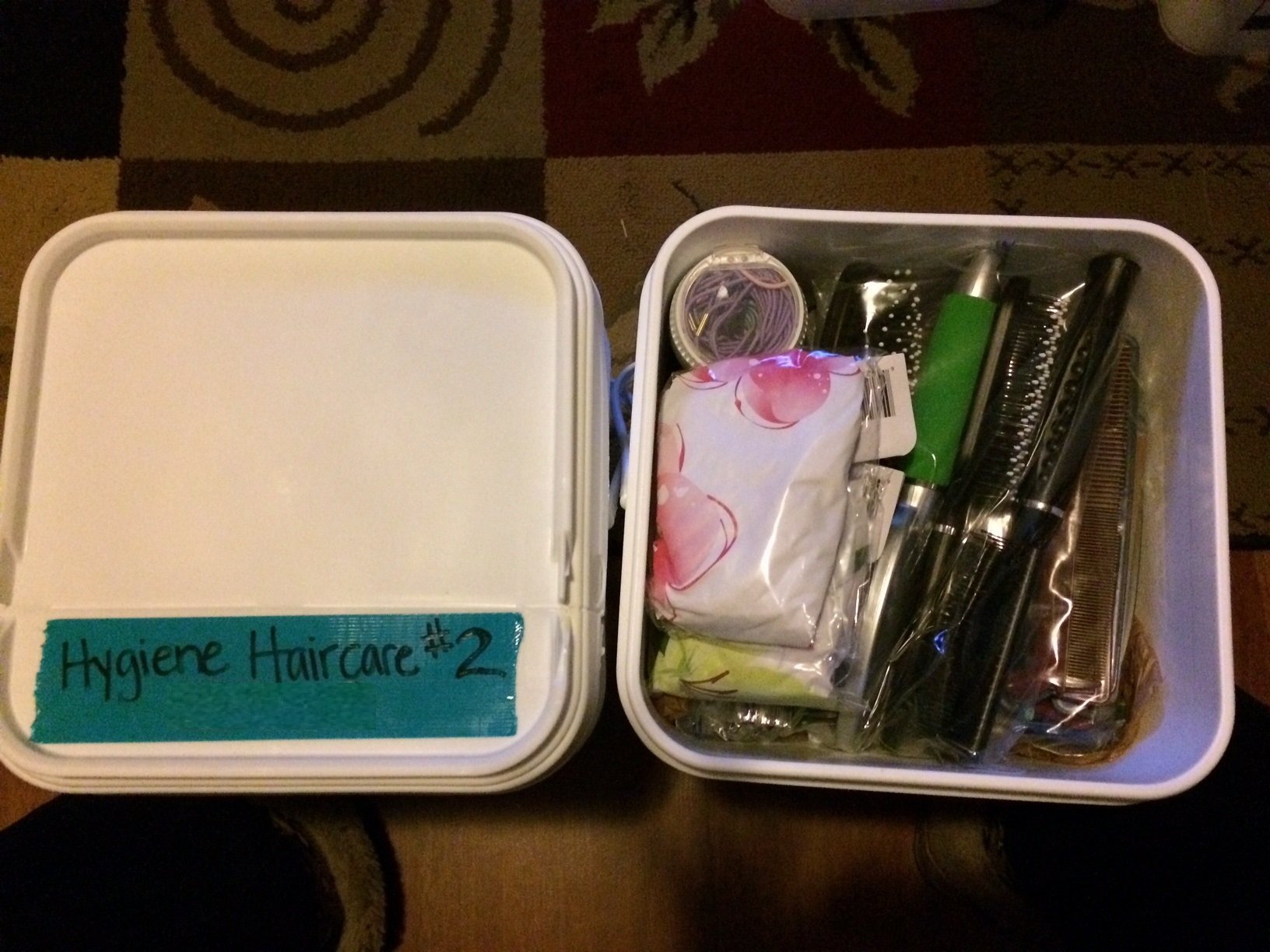
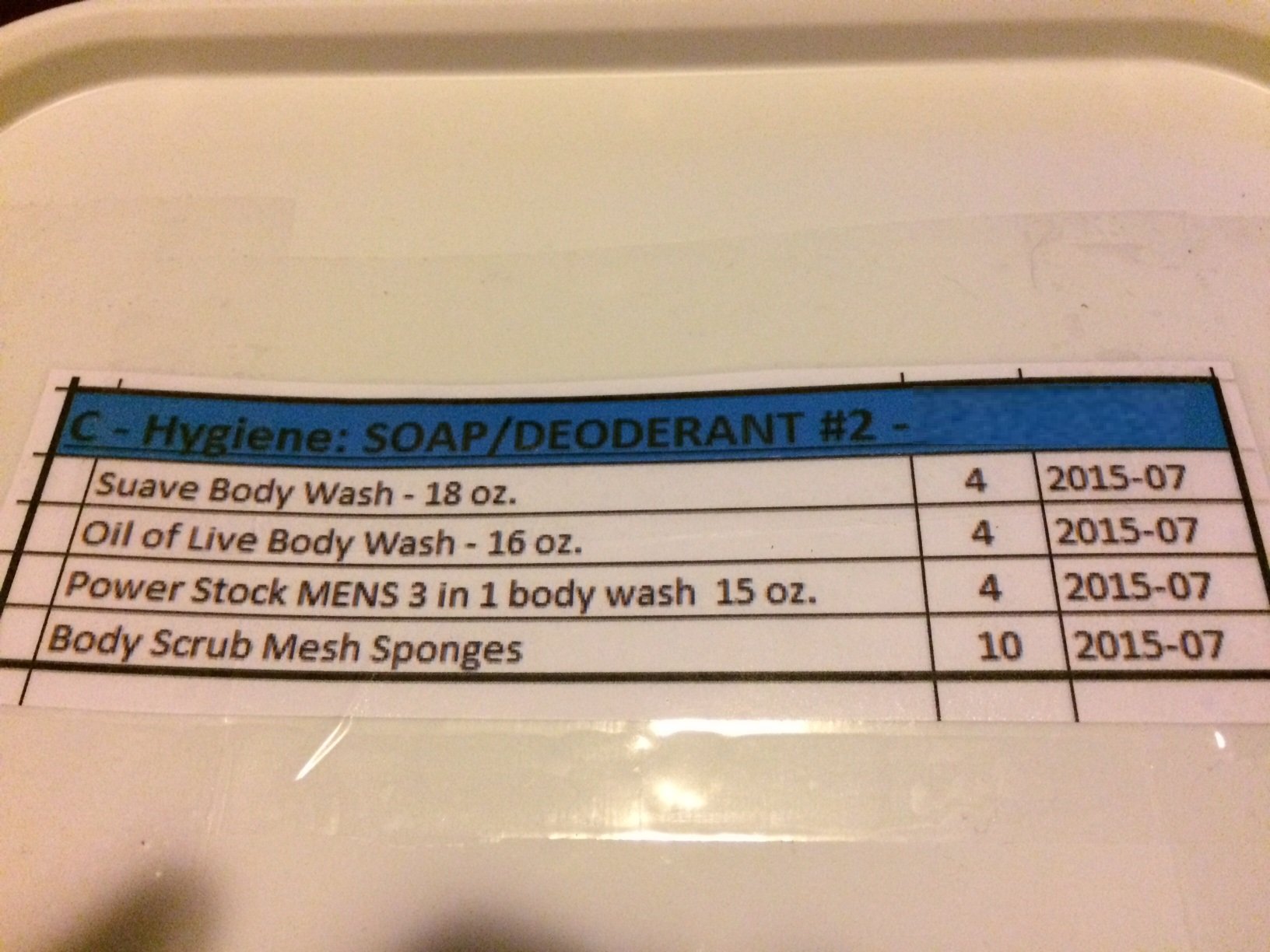
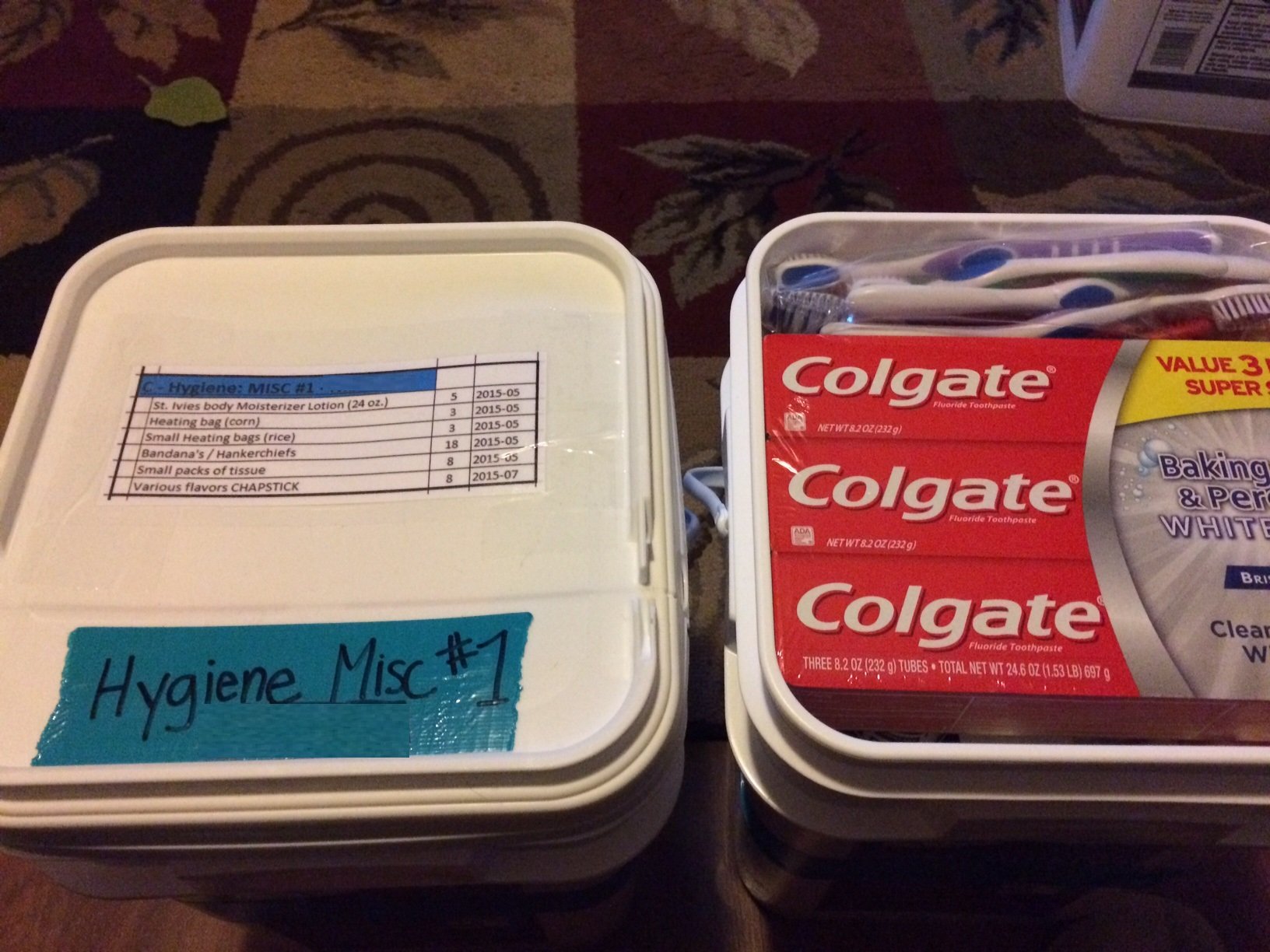

The 4 “P” Advantages of Using Buckets and Bins
- PARALLEL: Keep items in a uniform way – easily identifiable and stack-able
- PORTABLE: Good for “Grab and Go” scenarios if you have to temporarily leave your property (fire, violence, mob, flooding, etc.)
- PRACTICAL: Buckets and bins can also be used and helpful in various situations. They are very functional this way.
- PROTECTED: Items stored inside bins and buckets are more protected from being crushed or damaged than other tradition storage options like cardboard boxes, bags and backpacks.
Some of The Many Ways You Can Use 5 Gallon Buckets
- Store and organize your preps. Turn your bucket into a backpack!
- Use as a homemade clothes washer
- Use as a port-a-potty. Get a toilet seat cover/lid that fits right over it.
- Use a portable survival garden. You can move it easily to where there is sunlight using the handle. You can use them for composting.
- Make a water filtration system using two buckets.
- Use to harvest rain water, or to even collect water from a stream.
- Turn one on its side for an animal den or shelter.
- Use in building things; mix concrete or other things inside it.
- Use buckets to cover plants in the winter.
- With the lid on, you can use it as a seat or stool.
- Use it to carry dirt, wood, tinder, etc. while camping or gardening.
- Carry and transport about anything like fishing gear, cleaning supplies, tools, etc.
- Make a swing with it for the kiddies!
Ways You Can Use Storage Bins
- Turn it into a sink. Some even install a little drain to it.
- Give a child or pet a bath in a large bin
- Use as your firewood container when camping
- Use as a bed or home for animals or a pet.
- Keep clothes, towels, bedding and other items dry.
- Use as a catch all for shoes before entering a home or tent.
- Keep all your medical supplies together.
- Use as furniture if needed (coffee table, chair, bench, etc.)
What To Store in Your Buckets and Bins
- Food Storage Buckets – Bulk wheat, rice, beans, etc.
- Food Storage Buckets – Ready to eat Meals, Freeze dried packets, just add water meals, MRE’s
- 72 hour kits – one bucket per family member (make them into back packs with earlier link shared above)
- Water Bottles Bucket – one bucket per family member filled with water bottles
- Dishes: plates, bowls, silverware, serving utensils
- Prepping Dishes: large bowls, spoons, spatulas, rubber scrapers, whisks, measuring cups
- Pans: Dutch oven, iron skillet
- Spice Bucket: spices, gravy mix, baking soda, yeast, bullion
- Disease Control Buckets: toilet seat/toilet paper, feminine pads/tampons, baby wipes
- Shower Bucket: Solar shower bag, bar soap, face cloth, lotion, shaver, towels
- Tool Bucket: Spare tools, hammer, screw driver, measure tape, glue, saw, ax
- Quarantine Bucket: disposable overalls, gloves, masks (must have to treat sick people)
- Laundry Bucket: plunger, soap, line and clothes pins
- Cleaning Bucket: Scrubbers, cloths, soap, aprons, hand towels, all purpose cleaner
- Utility Bucket: tape, bungees, cutters, rope, wire, glue, zip ties
- Fuel Bucket: propane stove, 1 lb propane bottles, butane stove, butane fuel
- First Aid Bucket: ointment, bandages, medications, braces, stomach ailments, flu remedies, snake bite kit, wraps, etc.
- Hygiene Bucket: shampoo/conditioner, toothpaste, dental floss, make-up, q-tips, lotion, poison ivy lotion, deodorant
- Sewing Bucket: thread, needles, scraps of material, pins, picker
- Candle Bucket: left over candles, new candles, bag of wicks, matches
- Media Bucket: personal media player(s), uplifting movies, music on iPod, batteries
- Library Bucket: books, scriptures, photos
- Game Bucket: cards, dominoes, dice, chess
- Baby Bucket: cloth diapers, bottles, blankets, pins, burp cloths
- Military Bucket: binoculars, netting, ammo belt, knives, radio, 2-way radios
- Office Bucket: paper, notebooks, pens, pencils, crayons
- Weapons Bucket: guns, ammo, stun guns, pepper spray, etc.
- Money Bucket: precious metals, cash, copies of family papers, passports, etc.
- Shoe Bucket: Boots, flip flops, sandals, tennis shoes, hiking shoes
- Bedding Bin: sleeping bag, wool blanket, pillow, camp blanket
- Clothing Bins:
- Winter Clothing: overalls, gloves, beanies, cap, long underwear, wool socks, long sleeve T’s, long sleeve shirts, jeans, coat, sweatshirts, vest
- Summer Clothing: swimsuit (showers), shorts/capris, short sleeve shirts, sunglasses, socks, underwear, belt, hat/visor.


